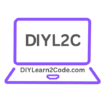Introduction: The Power of Prompt Engineering in 2025
For AI, Prompt engineering is the art and science of designing effective instructions—the “prompts”—that guide today’s advanced AI models to deliver accurate, relevant, and creative results. As AI-powered tools become essential across industries, mastering prompt engineering has become a must-have skill for web developers, DIY learners, and anyone leveraging artificial intelligence for content, coding, marketing, and research.
This guide equips you with practical strategies and real-world examples of prompt engineering, helping you go from basic to intermediate tasks. We’ll showcase ready-to-use prompts, explore top AI tools, and share interlinking tips for growing your skillset in web development, DIY automation, and prompt science.
- Introduction: The Power of Prompt Engineering in 2025
- What Makes Prompt Engineering Critical in Today’s AI Era?
- Key Benefits for Developers and DIY Creators
- Essentials: How to Write Effective AI Prompts
- 1. Clarity and Specificity
- 2. Role Assignment
- 3. Use Constraints and Examples
- 4. Iterate and Refine
- Sample Ready-to-Use AI Prompts (Basic to Intermediate)
- Basic Prompts
- Intermediate Prompts
- Top Online AI Tools for Prompt Engineering and DIY Web Development
- OpenAI (ChatGPT, API)
- Vertex AI (Google Cloud)
- PromptingGuide.ai
- IBM Watson and LlamaIndex
- Emerging Tools and Extensions
- DIY Best Practices for Prompt Engineering in Web Development
- Integrate Prompt Engineering With Blog & Code
- Quick Start: How to Begin DIY Prompt Engineering
- Going Further: Advanced Techniques for AI Prompt Engineering
- Conclusion: Why Master DIY Prompt Engineering for AI?
What Makes Prompt Engineering Critical in Today’s AI Era?
AI models—like ChatGPT, Google Gemini, Anthropic Claude, and open-source LLMs—respond to prompts that define the context, role, constraints, and desired output. A well-crafted prompt can:
- Unleash smart automation for web development and DIY projects
- Generate structured code, content, documentation, or images
- Improve search, productivity, and decision-making
- Fine-tune responses for customer support, educational tasks, and creative challenges

Key Benefits for Developers and DIY Creators
- Greater accuracy: Reduces AI mistakes and irrelevant answers.
- Productivity boost: Saves time in coding, writing, and research.
- Unlock advanced features: Enables chaining, reasoning, and multi-step instructions.
- Customizes results: Ensures outputs match branding or technical style.
Essentials: How to Write Effective AI Prompts
1. Clarity and Specificity
- Be direct—state exactly what you want (“Write a 3-paragraph summary of the history of robotics”).
- Provide context—who, what, why, and how (“You are a Python code reviewer for a DIY robotics blog…”)
- Specify format and constraints (“List in bullet points, max 60 words each”).
2. Role Assignment
Assign a persona to your AI for more tailored answers:
- Prompt: “Act as a senior web developer. Review this HTML/CSS code for accessibility issues.”
3. Use Constraints and Examples
Boundaries help focus responses and make outputs more usable.
- Example: “Describe AI prompt engineering in two sentences.”
- Example: “Generate Python code to plot robot sensor data using matplotlib.”
4. Iterate and Refine
Experiment! Test prompts, evaluate outputs, and adapt wording for accuracy, context, or tone.
Sample Ready-to-Use AI Prompts (Basic to Intermediate)
Basic Prompts with Sample Examples
- “Explain the main principles of web development.”
- “List five DIY robotics projects for beginners.”
- “What is prompt engineering in AI?”
- “Generate a tagline for a Python learning website.”
- “Summarize the benefits of using Arduino for today’s smart robots.”
Intermediate Prompts with Examples as Follows
- “Act as a technical document writer: Write installation instructions for Arduino IDE.”
- “Generate optimized Python code for filtering real-time sensor data in a line follower robot.”
- “As a web developer, devise an SEO strategy for a DIY blog targeting India, USA, UK.”
- “Role-play as an AI assistant: Plan a week-long curriculum for intermediate web developers learning prompt engineering.”
- “Critique the following HTML code for accessibility, security, and responsive design.”
- “Chain prompts: Ask the AI to first outline a blog on agentic AI, then generate each section with keyword focus and interlinking suggestions.”
Top Online AI Tools for Prompt Engineering and DIY Web Development
Explore these major platforms designed for developers and creators:
OpenAI (ChatGPT, API)
- Official Docs: OpenAI Platform
- Ideal for conversational tasks, code generation, translation, and content writing.
Vertex AI (Google Cloud)
- Prompt Engineering Guide: Introduction to Prompt Design
- Widely used for model management and prompt optimization for enterprise and research.
PromptingGuide.ai
- Resource: Prompt Engineering Guide
- Free guide, cheatsheets, and best practices for prompt writing across AI tools.
IBM Watson and LlamaIndex
- IBM Think: IBM Prompt Engineering
- Cutting-edge for LLM context handling, chaining, and evaluation.
Emerging Tools and Extensions
- LangChain, LangSmith (chain evaluation, context management)
- PromptLayer, Vellum (tracking, versioning, team management)
- AIPRM Chrome extension (ChatGPT prompt toolbox)
- PromptBase, PromptHero (prompt marketplace and library)
See comprehensive lists here: Prompt Engineering Tools for 2025
DIY Best Practices for Prompt Engineering in Web Development
Integrate Prompt Engineering With Website & Code
- Use AI-generated content and code, but review and humanize for quality.
- Place prompts and outputs within your workflow—design, research, writing, code snippets.
- Ensure SEO by embedding relevant AI and web development keywords.
- You can also visit to read more at Beginner’s Guide to Prompt Engineering for Web Developers for more basics.
- for more reference tutorials like Agentic AI for Web Development will also help to understand deeply.
- For advanced projects, connect to guides such as Advanced Line Follower Robot DIY Guide
.
Quick Start: How to Begin DIY Prompt Engineering
- Pick Your AI Tool: Start with OpenAI’s ChatGPT or Google Gemini.
- Choose Sample Tasks: Content generation, code writing, SEO planning, data analysis.
- Draft and Refine Prompts: Use the sample prompts above, adapt to your project.
- Test Outputs: Review and repeat. Adjust format, keywords, and constraints until satisfied.
- Document Your Prompts: Save and organize effective prompts; version them for new tasks and share within your developer network.
Going Further: Advanced Techniques for AI Prompt Engineering
- Chain prompts for multi-step workflows: e.g., “Outline a web app, then generate code.”
- Use role assignment for personas or team-based tasks.
- Automate with Python and APIs to send and parse complex prompts programmatically.
- Track, evaluate, and version prompts using tools like LangSmith, PromptLayer, and Vellum.
- and DAIR-AI’s Prompt Engineering Guide
Conclusion: Why Master DIY Prompt Engineering for AI?
Prompt engineering supercharges what you can do with today’s AIs—whether you’re building smart web apps, coding robots, creating content, or optimizing your DIY projects. By practicing clarity, specificity, iteration, and leveraging the best online tools, you’ll stay ahead in the smart era of AI, web development, and creative automation.
Explore more hands-on guides:
Master prompt engineering, experiment boldly, and share your insights—because the future of smart, creative technologies starts with you.


